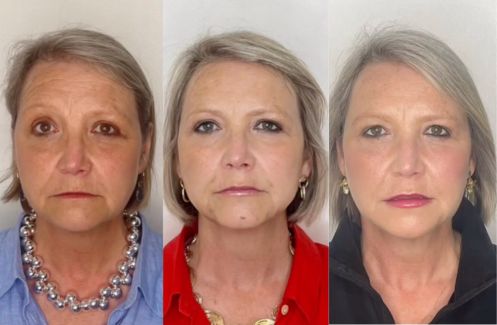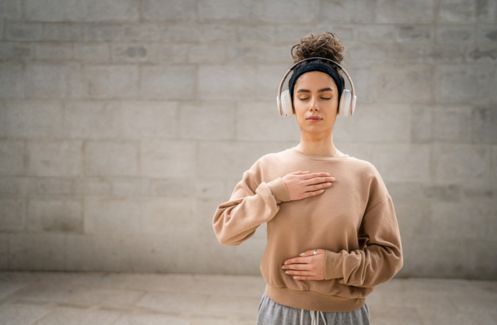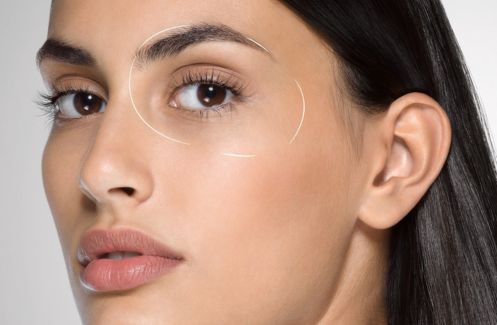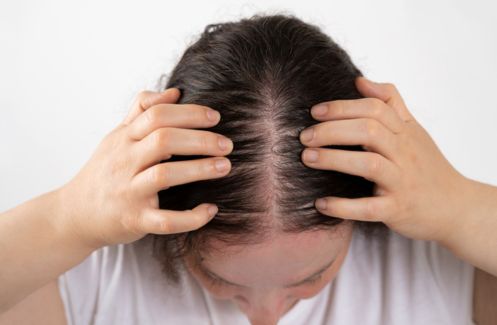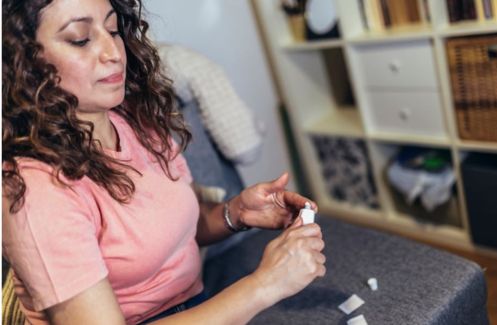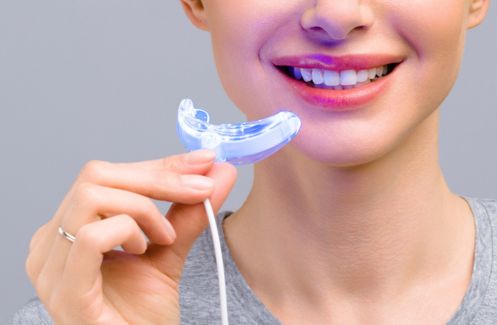THE PROBLEM How do I know if I need Botox or fillers? I am 43. What caveat do you have for fillers I have heard the scare stories….

One of the three key areas of non-invasive Cosmetic Dermatology is smoothing facial lines and wrinkles. See an experienced cosmetic dermatologist for full initial assessment. Be prepared to pay for this consultation, only then can you get the most objective recommendation.
There are three different types of facial wrinkles which each largely determine the kind of treatment. Firstly, ‘dynamic lines’ (or ‘mimic lines’) are caused by the movement of muscles. They include ‘frown lines’ (glabella lines) between the eyebrows, ‘worry lines’ on the forehead, ‘bunny lines’ on the nose and ‘crow’s feet’ at the outer eye corners. The second group, ‘static lines’, are visible when your face doesn’t move. They can develop on their own (‘primary static lines’) or from long-established dynamic lines (‘secondary static lines’). Lastly, gravitational folds are usually deeper furrows resulting from a combination of loss of volume and gravitation. A prime example of these are nasolabial folds running from your nose to the corners of your mouth. What happens is that as we get older, our faces tend to lose fat and first to go are the fat pads in our cheeks. This loss of volume leads to an envelope of loose skin which gravitation pulls downwards – hence the folds which look like sags.
Botulinum toxin (often referred to as ‘Botox’ after its first brand name) is a substance that, when injected into a muscle, will temporarily stop it moving. This is why botulinum toxin is a good treatment for dynamic facial lines. It has been used in cosmetic treatments for more than 20 years now and in the right hands is a safe and highly effective non-surgical solution for certain types of wrinkles. The great thing about cosmetic botulinum toxin is that it works at the root cause of dynamic lines by preventing the muscle from doing the very movement that’s causing the problem. For this reason, botulinum toxin also plays a useful wrinkle-prevention role in people who tend to over-use certain facial muscles.
It takes on average about five days for botulinum toxin to start kicking in. The effect on the muscle is fully reversible and lasts about three to six months and patients usually come for top-ups two to four times per year.
Fillers are the main solutions we use for ‘static lines’ and ‘gravitational folds’. They are injected directly beneath a line or fold to fill the depression it makes in the skin. There are countless fillers on the market and new ones are constantly being released. That’s why it’s so important to know which ones have the best safety records and give the best results.
Think of fillers as belonging roughly to either ‘permanent’ or ‘temporary’ groups. Temporary fillers are preferable for several reasons. Firstly, our face changes with time and cosmetic treatments must be adjusted to keep pace with these changes. A permanent filler couldn’t allow for this adjustment – you’d be stuck with it forever, like it or not! And while you may have been pleased with the initial result, it might look unnatural or out of place years down the line as your face ages further. The other reason is that various scientific studies have shown that permanent fillers are associated with a higher risk of unwanted side-effects and problems.
For all these reasons, I recommend using a non-permanent filler containing hyaluronic acid (for example one of the Restylane or Belotero range). Hyaluronic acid (hyaluronate) is an important physiological substance that all skin contains naturally. Its key roles are to maintain the plumpness and moisture that help keep the skin surface smooth and lifted, but levels decline with age. We inject fillers containing transparent hyaluronic acid gel, which over time are degraded by your body’s natural enzymes, just as happens with your natural hyaluronic acid. An extra advantage is that there is an ‘antidote’ for hyaluronic acid fillers – an enzyme called hyaluronidase. So if for some reason you would like us to dissolve your filler, we can do that.
Fillers can be used for all sorts of lines and wrinkles, from deep nose-to-mouth lines to superficial ‘lipstick bleed’ lines around the mouth. The effect is instantly visible, although there may be some swelling and bruising. How long the effects last depends on the individual patient, their lifestyle, age and the areas injected. But they usually last around six to nine months.
Healthista note: Make sure you see someone highly trained in injecting fillers and Botox, ideally a fully qualified dermatologist or plastic surgeon. The Chief Medical Officer Sir Bruce Keogh recently recommended a number of changes to the cosmetic undustry following the PIP breast implant scandal and one of those is to who is allowed to inject fillers – right now it’s technically anyone so ask to see your doctor’s qualifications and registration with the General Medical Council to ensure they are fit to practice.
Like this article? Sign up to our newsletter to get more articles like this delivered straight to your inbox.












